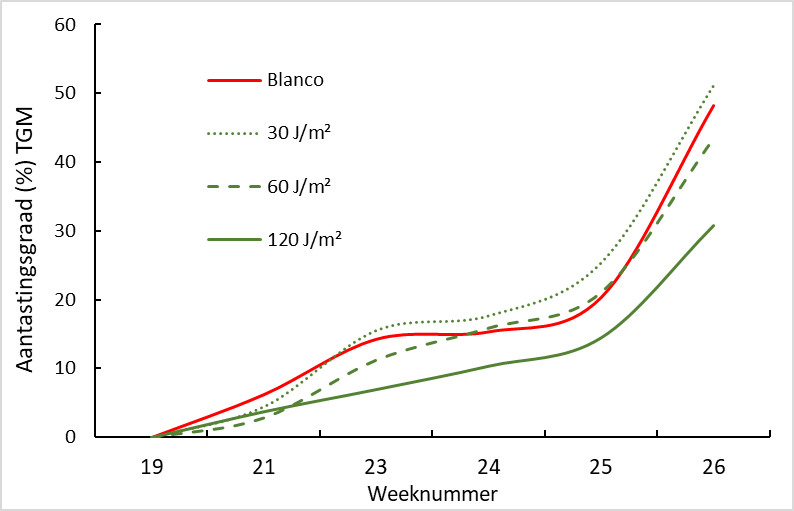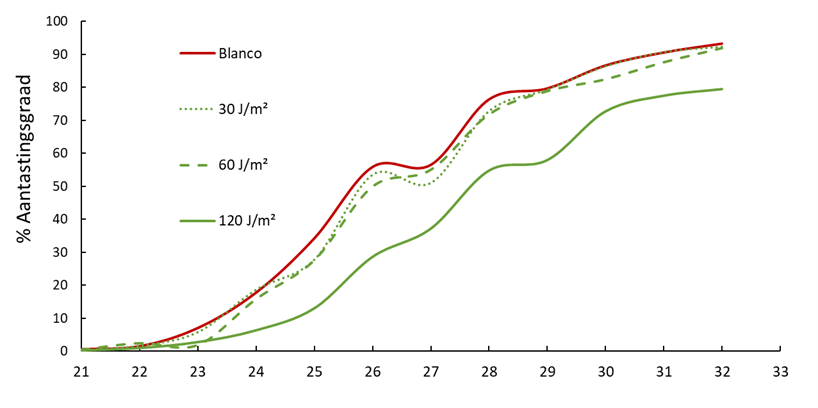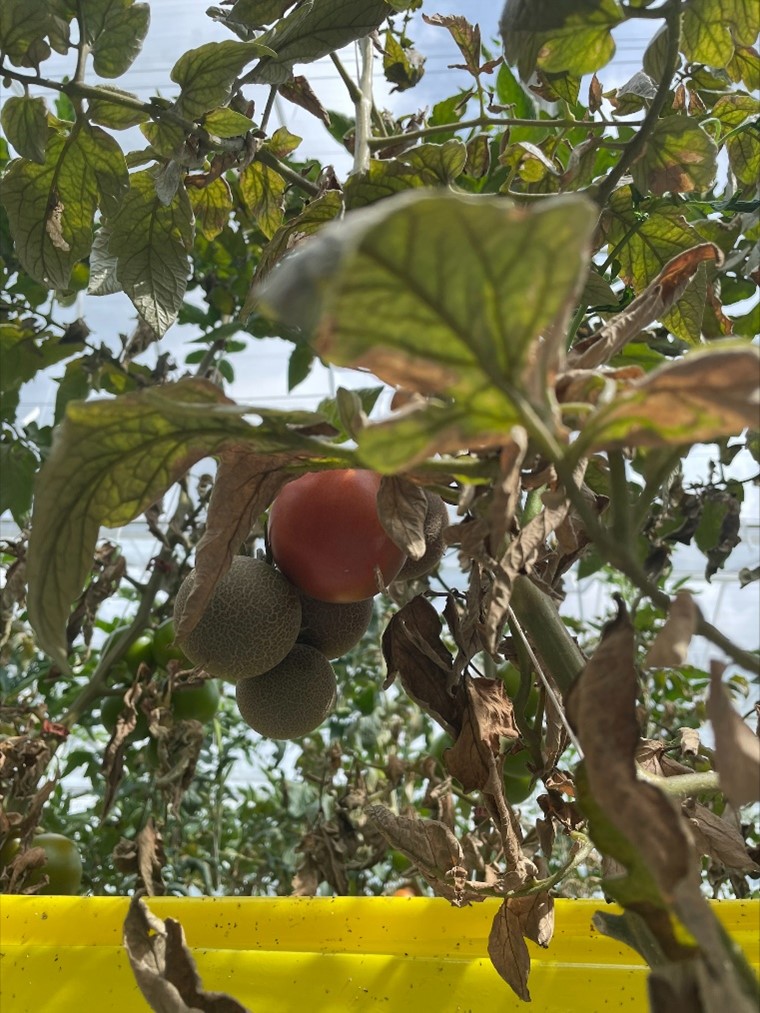The control of Powdery mildew in tomato was already defined in the UV-ROBOT project. In the extension of the project we changed our focus from Powdery mildew to the tomato russet mite (TRM). The trial of 2022 showed a delay in the population growth of the TRM in the cultivation (120 J/m², 3X/week, day-time treatments). The delay was +/- 1,5 or 2 weeks. It wasn’t a full control but we were able to delay the damage of the TRM and give the possibility to apply some chemical or biological control spray. In 2023 we did a new trial with the same focus, but changing the day-time treatments to night-time treatments. The results of 2022 were confirmed in the trial of 2023. Highest dosage of 120 J/m², 3x/week at night became the most promising treatment. We could say that higher amounts of UV-C has a negative effect on the population growth of the TRM. But it’s not an all-in-one solution to the TRM. Infected plants with high amounts of TRM will not be free of TRM after an UV-C treatment but the UV-C has the potential to overcome an infection with high amounts of TRM. Therefor UV-C needed to apply in a preventive strategy in the cultivation. UV-C gives the growers the time to apply some correction treatment with a biological or chemical spray. And time is crucial with a pest that can be disastrous a few weeks after the first emerge if there is no treatment.
Figure 1. Trial 2022 – day-time treatments (3x/week)
Figure 2. Trial 2023 – night-time treatments (3x/week)
Picture 1: tomatoplant infected with the tomato russet mite (TRM) – high infection rate



